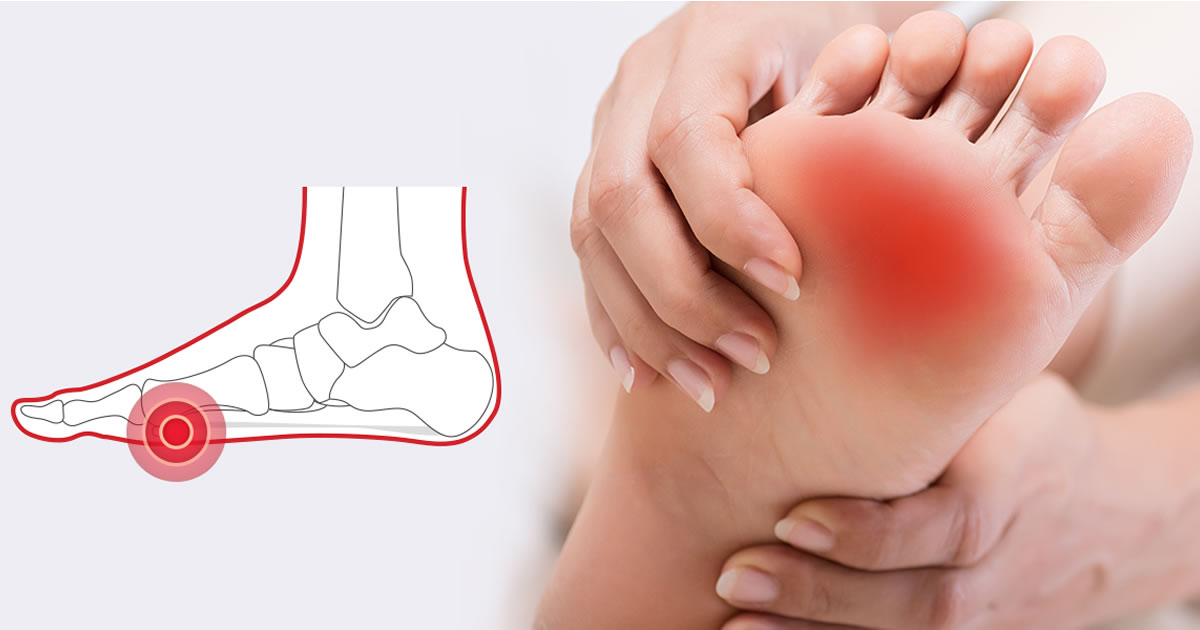
Metatarsalgia is a condition that causes pain and inflammation in the sole of the foot at the height of the metatarsus. You may have this condition if you participate in activities such as running or jumping. There are also other causes, for example, foot deformities and shoes that are too tight or large.
Although it is usually mild, metatarsalgia can leave you temporarily incapacitated. Treatments such as applying ice, putting your feet in warm water with salt and vinegar, or resting often relieve symptoms. The use of appropriate footwear “THERAPEUTIC AND BIOMECHANICAL FOOTWEAR BOCCIO” with insoles that absorb impacts or with supports for the internal arch of the foot. may prevent or minimize problems with metatarsalgia.
Symptoms
Symptoms of metatarsalgia may include:
- Sharp, painful, or burning pain on the sole of the foot, the part of the sole just behind the toes
- Pain that gets worse when you stand, run, flex your feet, or walk, especially barefoot on a hard surface, and that gets better when you rest
- Sharp or stabbing pain, numbness, or tingling in the toes
- A feeling of having a pebble in the shoe
When to consult the doctor
Not all foot problems require medical attention. Sometimes your feet hurt when you stand for a long time or finish a strenuous workout. However, it is not advisable to ignore foot pain if a few days pass and it does not improve. See your doctor if you feel severe, burning pain in the sole of your foot and it does not improve after several days.
Causes
Sometimes a single factor can lead to metatarsalgia. Most often, several factors cause the condition, including:
- Intense activity or training. Long-distance runners are at risk for metatarsalgia, mainly because the front of the foot absorbs considerable force when a person runs. But anyone who participates in a high-impact sport is at risk, especially if the shoes they wear don’t fit well or are worn.
- Certain foot shapes. A high plantar arch puts additional pressure on the metatarsus. The same happens when you have a second toe longer than your big toe. This causes more weight than normal to shift to the head of the second metatarsal bone.
- Foot deformities. Wearing shoes that are too small or high-heeled deforms the foot. A finger bent down (hammertoe) or swollen, painful lumps at the base of the big toe (bunions) cause metatarsalgia.
- Excess weight. Because when we move most of the weight of the body is transferred to the front of the foot, being overweight means more pressure on the metatarsal bones. Losing weight helps reduce or eliminate symptoms.
- Inadequate footwear. High-heeled shoes transfer extra weight to the front of the foot and are a frequent cause of metatarsalgia in women. Narrow-toed shoes or athletic footwear that do not offer support and cushioning also contribute to the problem.
- Fatigue fractures. These small fractures in the metatarsal or toe bones are painful and change the way the weight is supported on the foot.
- Morton’s neuroma. This benign (noncancerous) tumor of fibrous tissue that grows around a nerve usually forms between the heads of the third and fourth metatarsal bones. It causes symptoms similar to those of metatarsalgia and will generate tension in the metatarsus.
Risk factors
People may have metatarsalgia, but the risk is higher in the following cases:
- Participate in high-performance sports that include activities such as running or jumping
- Wear high-heeled shoes, shoes that don’t fit well, or shoes with cleats or nails, such as some types of athletic shoes
- Being overweight
- Having other foot problems, such as hammertoes or corns on the sole of the foot
- Having some type of inflammatory arthritis, such as rheumatoid arthritis or gout
Complications
If left untreated, metatarsalgia could cause pain in other parts of the same foot or in the other foot, as well as pain in any other part of the body, such as the lower back (lower back) of the back or hip, due to lameness (impaired gait or gait) resulting from pain in the foot.
TREATMENT
In all cases of metatarsalgia and even before symptoms appear it is advisable to use shoes suitable for each activity, “THERAPEUTIC AND BIOMECHANICAL FOOTWEAR BOCCIO” preferably manufactured to the particular and individual need of each person in 100% natural fibers , this helps to prevent and reduce symptoms.
